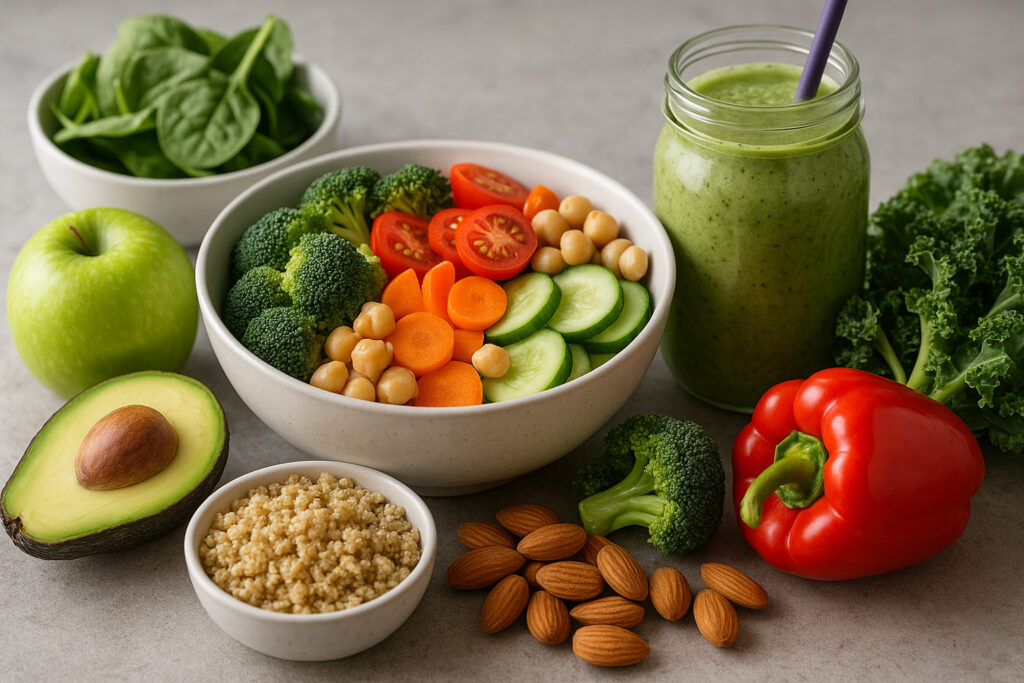Most of us know we should eat more vegetables. But between busy schedules, tempting junk food, and plain old forgetfulness, it’s easy to fall short. In Japan, the government recommends eating at least 350 grams of veggies a day — but the average person is falling behind. So, one city decided to try something a little different: they turned healthy eating into a game.
And it worked.

The Problem: Veggie Intake Still Too Low
According to Japan’s 2016 National Health and Nutrition Survey, only about 29% of adults were hitting the 350g vegetable target. Men were averaging just 309g a day, and women only slightly better at 318g. Not terrible — but still short of the goal.
Why does it matter if we’re not eating enough veggies? Because it’s not just about missing out on greens — it’s about opening the door to serious health issues. A consistently low intake of vegetables is tied to a higher risk of heart disease, strokes, certain types of cancer, and type 2 diabetes.
Vegetables aren’t just colorful side dishes — they’re nutritional powerhouses packed with fiber, essential vitamins, and antioxidants. These nutrients help your body fight inflammation, keep your immune system in top shape, and support long-term health. So boosting your veggie intake isn’t just a smart move — it’s one of the simplest and most powerful ways to invest in your well-being.
The Solution: Turn Nutrition into a Game
To tackle this, a city in Japan launched a public health campaign that took a fun, interactive approach. In 2021, they rolled out a smartphone app featuring a vegetable quiz. It asked users multiple-choice questions about vegetable nutrition, and for each correct answer, they earned points. Rack up enough, and you could redeem them for product vouchers.
It wasn’t just about learning — there were actual rewards. That’s what made this campaign stand out: it paired education with real-life incentives.
The Results: More Quizzes, More Veggies
So, did it work? Researchers studied nearly 800 people who took part in the quiz. What they found was impressive: people who completed all three quizzes ended up eating 10.7% more vegetables than those who didn’t participate.
Even more encouraging, those who took the quiz more often showed noticeable improvements compared to their own habits from the previous year.

This isn’t just good news for salad lovers — it’s a reminder that healthy habits can actually be fun. By turning nutrition education into a quiz game with real rewards, the campaign didn’t just raise awareness — it changed behavior. That’s a big deal, especially when it comes to diet, one of the toughest things to shift.
For public health officials around the world, this is like striking gold. A simple, low-cost campaign that gets people to eat more vegetables without lectures or guilt trips? That’s the kind of innovation worth replicating. It’s proof that when you meet people where they are — on their phones, in small bursts of engagement — you can make meaningful, lasting changes.
How Would You Get More Veggies?
If you’re feeling inspired, here are some fun, easy ways to sneak more greens (and oranges and purples) into your day:
- Start with breakfast: Add spinach to scrambled eggs or toss kale into your smoothie.
- Snack smart: Keep cut veggies like bell peppers, carrots, or cherry tomatoes handy with a tasty dip.
- Upgrade your meals: Add extra veggies to soups, pasta sauces, stir-fries, or even sandwiches.
- Go meatless once a week: Try a veggie-forward dish like roasted cauliflower tacos or lentil curry.
- Try something new: Ever cooked with burdock root? How about okra or kabocha squash?
Small changes add up fast — and your heart, immune system, and taste buds will thank you.
Can You Pass This Veggie Quiz?
Think you know your veggies? Here are a few sample questions inspired by the quiz used in the campaign. See how you do!
1. Which vegetable is highest in vitamin C?
A) Spinach
B) Bell pepper
C) Cucumber
D) Carrot
2. Which of these vegetables contains the most calcium?
A) Kale
B) Tomato
C) Zucchini
D) Celery
3. Which of these vegetables is especially high in dietary fiber?
A) Potato
B) Lettuce
C) Burdock root (gobo)
D) Eggplant
How’d you do? (Answers: 1-B, 2-A, 3-C) Share your score and challenge your friends to beat it!
Citations:
- World Health Organization (2003). Diet, Nutrition and the Prevention of Chronic Diseases. WHO Technical Report Series 916. https://www.who.int/publications/i/item/924120916X
- Kyan, A., Sato, K., & Kondo, N. (2024). Increased vegetable consumption in Japan using an incentivized health communication campaign with a quiz. Journal of Nutritional Science, 13, e22. https://doi.org/10.1017/jns.2024.14
- Ministry of Health, Labour and Welfare (2016). National Health and Nutrition Survey. https://www.mhlw.go.jp/bunya/kenkou/kenkou_eiyou_chousa.html